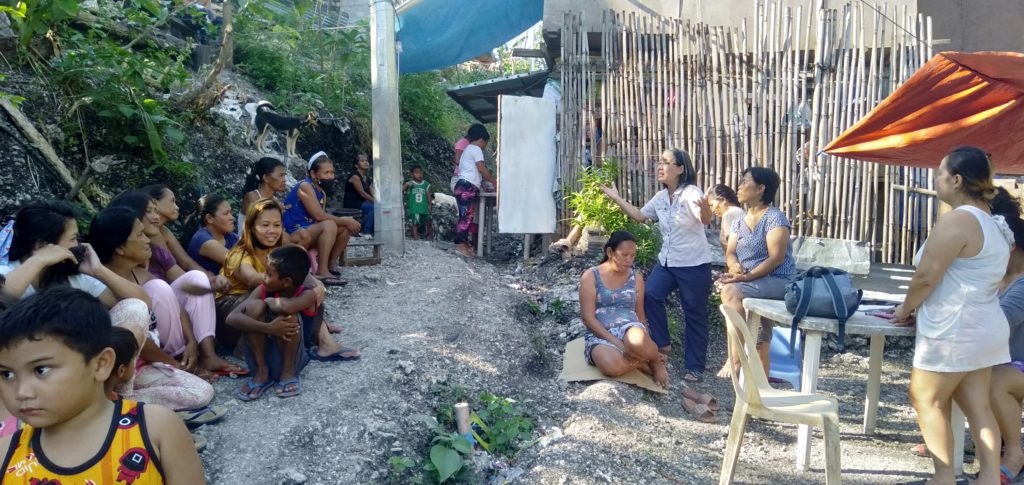Now on its eighth month, the project “Building resilient communities: integrating primary health care in disaster risk reduction and management” continues to reap gains and benefits for the people of Bantayan.
The project, sponsored by the Unitarian Universalist Service Committee (UUSC) is a continuing endeavor of the Visayas Primary Healthcare Services to respond to the needs of the people in Bantayan Island for primary health care services and increased capacities to prepare and manage health emergencies and disasters. It is implemented in Barangays Patao, Kampinganon, and Lipayran of the Municipality of Bantayan and Barangay San Agustin of the Municipality of Madridejos.
Specifically, the project aims to enhance the capacity of the people’s organizations on community-based disaster risk reduction and management, to train community health workers (CHWs) on primary health care to prepare and to manage health emergencies and disasters, to mobilize them to teach their community members about health preparedness and address common health problems, thereby decreasing their vulnerabilities in times of emergencies and disasters, and to establish coordination on disaster management between the people’s organizations and their local disaster risk reduction and management (DRRM) councils.
The project works in partnership with the people’s organizations in the four communities, namely: Lipayran Farmers and Fisherfolks association (LIFFA), Patao Drivers and Fisherfolks Association (PADFA), Kampinganon Farmers Association (KFA), and San Agustin Farmers and Fisherfolks Association (SAFFA).
On December 2015 to March 2016, basic health skills trainings were conducted for the health committees of the people’s organization. A total of 41 community health workers (CHWs) were trained on basic health skills.
The topics included (a) national and local health situation, (b) community-based health program (CBHP) orientation, (c) vital signs taking: blood pressure, temperature, pulse rate, respiratory rate, (4) home remedies: water therapy, cupping therapy, (5) control of acute respiratory infection (ARI), (6) control of diarrheal diseases (CDD), (7) nutrition and breastfeeding, (8) proper hygiene and environmental sanitation and (9) review of the Community Resiliency Model (CRM).
The trained CHWs use home remedies such as cupping therapy, acupressure, herbal medicine and water therapy to treat common diseases. They also conduct health education on nutrition, environmental sanitation and proper hygiene and other health issues. There is a monthly monitoring of children’s weights and blood pressure monitoring of adults. Barangay activities such as Operation Linis are also conducted for environmental sanitation.
Home visits to families especially those who are sick are rendered by the trained CHWs. They also refer patients to the health center when needed.
Meetings have also been conducted by the people’s organizations with officials of the Municipal Disaster Risk Reductin and Management Council (MDRRM) in order to collaborate on how the barangays can work with the MDRRM on disaster mitigation. Genisa D. Alolor oand Aries Biso, staff of the MDRRM of Madridejos and Bantayan, respectively, met with the leaders of the people’s organizations in Barangay Patao and San Agustin.
The project is in the process of drawing up an integrated DRRM plan for the barangays in order to effectively respond to disasters when they occur.
The project staff are also actively working with the trained CHWs to continue their health services and health education activities.



